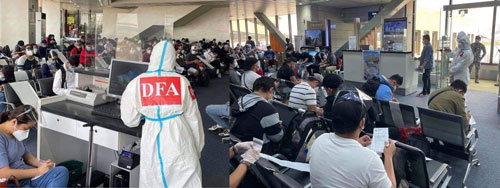For the eight straight session, the policymaking Monetary Board yesterday decided to maintain the key rates of the Bangko Sentral ng Pilipinas as latest baseline forecasts show inflation remain manageable while economic output is gaining solid traction.
The BSP’s overnight reverse repurchase facility remains at 2 percent. The interest rates on the overnight deposit and lending facilities were likewise kept at 1.5 percent and 2.5 percent, respectively.
Benjamin Diokno, BSP Governor and Monetary Board chief, said the sum of new data “suggests that there remains scope to hold monetary policy settings steady amid a manageable inflation environment.”
“The Monetary Board maintains that keeping a patient hand on the BSP’s policy levers, along with appropriate fiscal and health interventions, will keep the economic recovery more sustainable over the next few quarters,” Diokno said.
Central banks reduce interest rates to encourage borrowing and investing, thereby possibly stimulating economic growth but may hasten inflation. Rates are raised when there is too much economic growth.
Average inflation, according to Diokno, is seen to slightly exceed the upper end of the target band of 2 to 4 percent in 2021. For 2022 and 2023, inflation is projected to settle close to the midpoint of the target range.
“The recent rise in global crude oil prices, the stronger recovery in domestic economic activity, and the slight depreciation of the peso were mostly offset by the lower-than-expected inflation outturns in recent months. Inflation expectations have also remained firmly anchored to the baseline projection path,” Diokno said.
However, Diokno said risks to the inflation outlook have shifted towards the upside for 2022 even as they remain broadly balanced for 2023.
He explained that upside risks are mainly linked to the potential impact of weather disturbances on the prices of key food items, petitions for transport fare hikes, and the possibility of a prolonged recovery of domestic pork supply.
“Strong global demand amid persistent supply-chain bottlenecks could also exert further upward pressures on international commodity prices. The uncertainties in food supply require determined reforms to improve farm productivity and competitiveness,” Diokno said.
He said “potential delays in the lifting of domestic containment measures, as well as the emergence of more virulent COVID-19 variants, could dampen prospects for both global and domestic demand and thus temper inflationary pressures.”
“The BSP remains of the view that supply-side price pressures are best addressed by timely non-monetary interventions that could ease domestic supply constraints,” he added.
October’s inflation hit 4.6 percent, closer to the lower bound of BSP’s forecast range of 4.5-5.3 percent.
This brings the year-to-date inflation at 4.5 percent.
Francis Dakila, BSP Deputy Governor, said the latest forecasts show inflation for the whole year 2021 will average at 4.3 percent, slightly lower than the earlier full-year forecast of 4.4 percent.
For 2022 and 2023, Dakila said forecasts were retained at 3.3 percent and 3.2 percent, respectively.
The Monetary Board, Diokno said, also observed that economic growth appears to be gaining solid traction, driven by improved mobility and sentiment amid the calibrated relaxation of quarantine protocols and continued progress in the Government’s vaccination program.
“(The Monetary Board) noted that sustained measures to safeguard public health and welfare remain crucial to facilitate the recovery in investment and employment,” Diokno said.
Philippines’ GDP grew 7.1 percent in the third quarter. This stronger than expected growth increases the likelihood that the revised growth projection of 4 to 5 percent in 2021, earlier set by the Development Budget Coordination Committee, “would be exceeded and growth targets of 7-9 percent in 2022 and 6-7 percent in 2023 also look doable.”
“(The Monetary Board stands) ready to maintain its accommodative monetary stance for as long as necessary to support the economy’s sustained recovery to the extent that the inflation outlook would allow. We will continue to prioritize providing policy support for the economy while keeping an eye on the potential risks to future inflation,” Diokno said.





